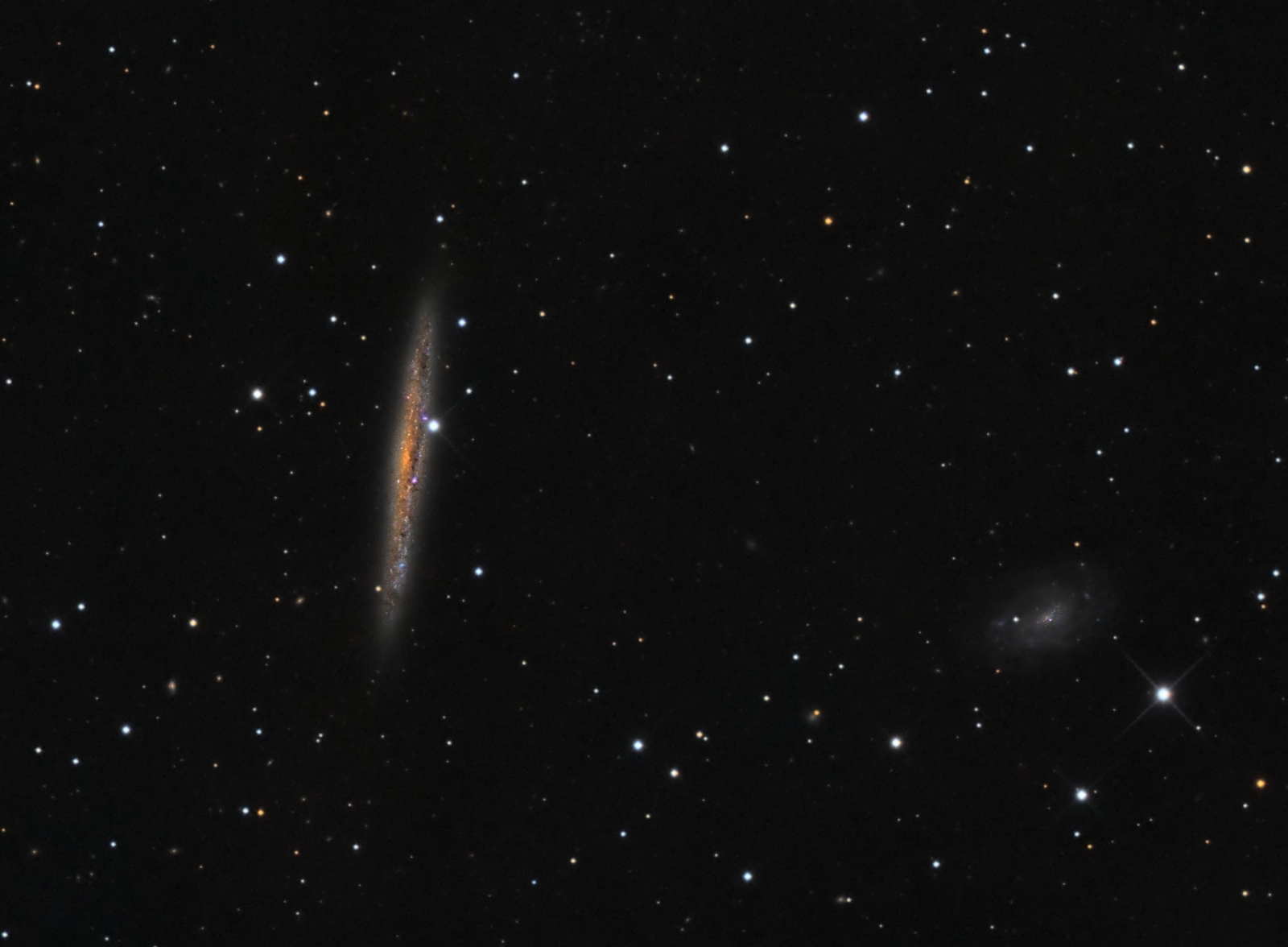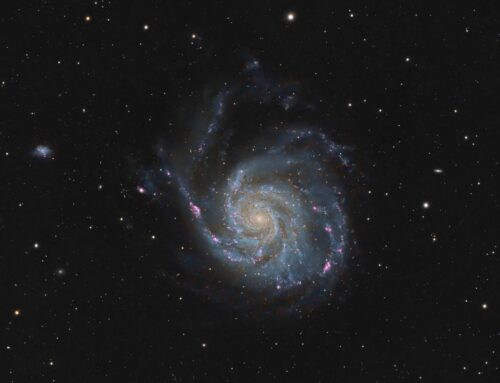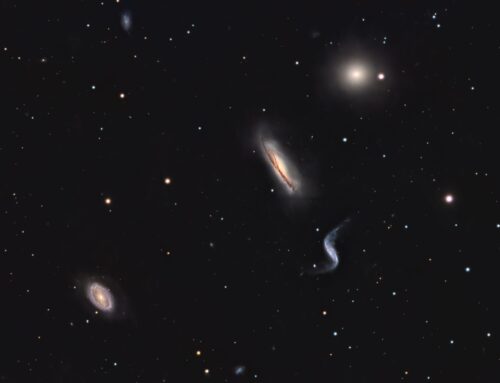NGC4517, Spiral Galaxy
 Click image for full size version
Click image for full size version
April 26 2015
NGC4517, the most prominent galaxy in this image, is an edge-on spiral galaxy. It is a member of the Virgo Cluster of galaxies and lies about 40,000,000 light years away in the direction of the constellation Bootes. This galaxy is a little larger than our own Milky Way galaxy. This image shows its prominent dark lanes, star clusters (blue) and nebulae (pink). The face-on spiral galaxy on the right is called NGC4517A. Numerous other Virgo Cluster galaxies are strewn around the image too. Look for smudges and streaks. All of the individual stars in this image — including the bright one “touching” the galaxy — are in the foreground.
Tekkies:
SBIG STL-11000M camera, Baader RGB filters, 10″ f/6.8 ASA astrograph, Paramount MX. Guided with STL-11000’s external guider and 80 mm f/6 Stellar-Vue refractor. Acquisition, guiding and calibration done using Maxim-DL. Focusing with FocusMax. Automation with CCDCommander. Registration, integration and all processing in PixInsight. Shot from my SkyShed in Guelph, Ontario. Crescent to quarter moon, good transparency and average seeing throughout acquisition.
20x10m R, 20x10m G and 20x10m B unbinned frames (total=10hr).
RGB:
Creation and cleanup: R, G and B masters were cropped and combined to make an RGB image which was processed with DBE and ColourCalibration.
Stretching: HistogramTransformation was applied to make a pleasing yet bright image.
Synthetic Luminance:
Creation and cleanup: The cropped R,G and B masters were combined using the ImageIntegration tool (average, additive with scaling, noise evaluation, iterative K-sigma / biweight midvariance, no pixel rejection). DBE was applied to neutralize the background.
Deconvolution: A star mask was made to use as a local deringing support. A copy of the image was stretched to use as a range mask. Deconvolution was applied (100 iterations, regularized Richardson-Lucy, external PSF made using DynamicPSF tool with about 20 stars).
Linear Noise Reduction: MultiscaleLinearTransform was applied to reduce noise in Layers 1 and 2.
Stretching: HistogramTransformation was applied to make a pleasing yet bright image.
Combining SynthL with RGB:
The luminance channel of the RGB was extracted, processed and then added back into the RGB image as follows:
1. Extract luminance from the RGB image.
2. Apply LinearFit using the SynthL channel as a reference.
3. Use ChannelCombination in Lab mode to replace the RGB’s luminance with the fitted luminance from step 2.
4. LRGBCombine was then used to make a SynthLRGB image.
Final Processing
Dynamic Range Adjustment and Stretching: TGVDenoise was applied in Lab mode with only luminance selected and using default settings, followed by HistogramStretch.
Final Steps: An UnsharpMask was applied to the galaxy. A copy of the SynthL was processed with MultiscaleLinearTransformation with 4 layers and residual unchecked. Convolution (1 px) was applied to the result and this was used as a mask to boost colour saturation in the centre of the medium and small stars. The deconvolution Deringing Support file was used as a starting pointto make a contour mask for bright stars. Colour saturation in star halos was reduced using this mask. A star mask made with default settings was used to sharpen stars with UnsharpMask and then shrink and soften slightly with MorphologicalTransformation. SCNR was applied through the same star mask to reduce green cast in a few stars.
Image scale is about 1.1 arcsec per pixel for this camera / telescope combination.






very good, Ron. Compliment